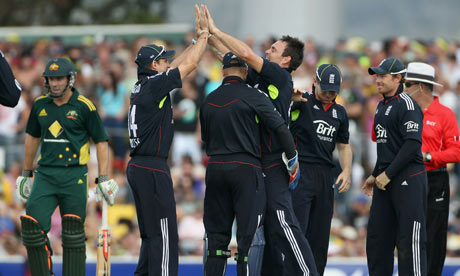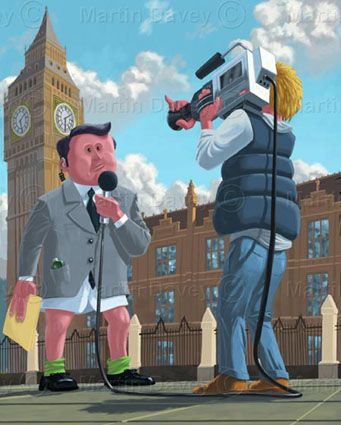The markets closed last week on a disastrous note. The Sensex nosedived close to 500 points while the Nifty ended at 5,904. For the week, the key indices closed down 4%.
The fall was always on the cards with spiraling inflation and high crude oil prices, says
Ajay Srivastava, CEO of Dimensions Consulting. “The government is not responding to high inflation so far,” he adds, “The macroeconomic factors suddenly seem to tell us that it is graying in the horizon and is not brightening up.”
However, he believes there will be some pockets which will continue to outperform the rest of the market. “Pharma and consumer sectors will still outperform on uninterrupted government spending to the space,” he says. His picks from the consumer sector include P&G, Unilever, Colgate and Godrej Consumer.
Going forward, he says markets could correct 8-10% from current levels. “Companies are likely to see margin contraction in 2011.”
Below is a verbatim transcript of Ajay Srivastava's interview with CNBC-TV18's Udayan Mukherjee and Mitali Mukherjee. Also watch the accompanying videos for more.
Q: What have you made of the events of last week and do you think the market might continue to
underperform in the near-term?
A: Definitely, with this kind of inflation rate, oil at USD 92 per bbl which has never been good for India ever, the weak policy framework along with what’s happening in Parliament. You have a set of situations where we need quick responses. However, the government is not responding as fast as it should, inflation is still as high as ever and interest rates are becoming an issue.
In all certain circumstances, the macroeconomic factor suddenly seems to tell us that it is graying in the horizon and is not brightening up. However, there are also pockets of areas which we believe will still outperform the rest of the market like pharma, the consumer because I don’t think government is going to stop spending on National Rural Employment Guarantee Act (NREGA) scheme etc.
Come the budget, more money will go into those schemes to handle the political situation at this point of time. There are pockets of good things but overall, in the economy we are definitely much weaker than what we were in November or October.
Q: Is there a downside to this market overall in the near-term?
A: We believe that another 8-10% is what is rightfully so, unless the budget corrects it. If we travel back, reverse from Nifty at about 5,400-5,500, we think that that’s the level at which the market will or should go down to, before it starts to stabilise and move up. So 8-10% we believe is another one which should happen if things continue the way they are.
Q: Do you see this as a temporary problem just for the next two-three months till inflation comes under control or do you think this year could be a sticky year?
A: This year is going to be a sticky year for a lot of industries, purely because the revenue expansion of the companies is not happening, the margin contraction is happening. Our costs are going up but the revenue expansions are not going up for whatever reasons they are. Therefore, it is going to be a very sticky year.
I don’t think we are talking of very high growth rates for the next financial year at all by any standard. On a whole, it’s going to be a very tricky year for most of the companies. We are quite sure that profit margins are going to drop in 2011-12.
Q: Which are the consumer sectors you think will relatively outperform the market?
A: If you put companies in perspective, look at P&G, Hindustan Unilever, Colgate, or even local Indian companies which are there in this segment, the Dabur, Godrej Consumers, these are the companies which are going to gain in this market. This is because the government spending plan will continue to be very high in the market that they are in today.
These too, can pass on the cost and with a much larger base their economics are improving. These companies will definitely stand to gain given the fact that the government is very clear, as it is going to spend more money in rural areas. These are the plays which have done very well last year and will continue to do well this year too, no matter what happens to the market.
Q: What do you do now with the autos this year?
A: We must buy companies where there is a hedge. In autos, Mahindra & Mahindra form a perfect hedge to the market. They are moving into segments which have nothing to do with auto like defence and other sectors, where there is a perfect hedge.
Autos on a standalone basis cannot have a very good run this year because the margins are going to be under tremendous pressure. Every raw material supplier we meet says we ask for a price increase from the main companies whether its Maruti, Bajaj Auto and Hero Honda.
They all facing huge pressure from the suppliers, so there has to be margin compression coming in the pure play auto companies. We would say - go to companies where there is a hedge and stick with those companies rather than a pure play company, for the next quarter or so.
Q: Would you buy banks after the correction?
A: Not right now. I would still start to accumulate things like HDFC Bank. We would try to get out of nationalise banks totally because the environment is telling another story that NPAs will mount in the segment where nationalise banks are in, small companies, trading companies, medium range companies etc.
This is a time to look at an HDFC kind of bank which has got a cleaner portfolio rather than sticking on to nationalize banks. A lot of people are still sitting in the stock - they went ahead, had a good run last year but nationalise banks are going to be the first hit in terms of the interest rate problem and the economy.
However, he believes there will be some pockets which will continue to outperform the rest of the market. “Pharma and consumer sectors will still outperform on uninterrupted government spending to the space,” he says. His picks from the consumer sector include P&G, Unilever, Colgate and Godrej Consumer.
Going forward, he says markets could correct 8-10% from current levels. “Companies are likely to see margin contraction in 2011.”
Below is a verbatim transcript of Ajay Srivastava's interview with CNBC-TV18's Udayan Mukherjee and Mitali Mukherjee. Also watch the accompanying videos for more.
Q: What have you made of the events of last week and do you think the market might continue to underperform in the near-term?
A: Definitely, with this kind of inflation rate, oil at USD 92 per bbl which has never been good for India ever, the weak policy framework along with what’s happening in Parliament. You have a set of situations where we need quick responses. However, the government is not responding as fast as it should, inflation is still as high as ever and interest rates are becoming an issue.
In all certain circumstances, the macroeconomic factor suddenly seems to tell us that it is graying in the horizon and is not brightening up. However, there are also pockets of areas which we believe will still outperform the rest of the market like pharma, the consumer because I don’t think government is going to stop spending on National Rural Employment Guarantee Act (NREGA) scheme etc.
Come the budget, more money will go into those schemes to handle the political situation at this point of time. There are pockets of good things but overall, in the economy we are definitely much weaker than what we were in November or October.
Q: Is there a downside to this market overall in the near-term?
A: We believe that another 8-10% is what is rightfully so, unless the budget corrects it. If we travel back, reverse from Nifty at about 5,400-5,500, we think that that’s the level at which the market will or should go down to, before it starts to stabilise and move up. So 8-10% we believe is another one which should happen if things continue the way they are.
Q: Do you see this as a temporary problem just for the next two-three months till inflation comes under control or do you think this year could be a sticky year?
A: This year is going to be a sticky year for a lot of industries, purely because the revenue expansion of the companies is not happening, the margin contraction is happening. Our costs are going up but the revenue expansions are not going up for whatever reasons they are. Therefore, it is going to be a very sticky year.
I don’t think we are talking of very high growth rates for the next financial year at all by any standard. On a whole, it’s going to be a very tricky year for most of the companies. We are quite sure that profit margins are going to drop in 2011-12.
Q: Which are the consumer sectors you think will relatively outperform the market?
A: If you put companies in perspective, look at P&G, Hindustan Unilever, Colgate, or even local Indian companies which are there in this segment, the Dabur, Godrej Consumers, these are the companies which are going to gain in this market. This is because the government spending plan will continue to be very high in the market that they are in today.
These too, can pass on the cost and with a much larger base their economics are improving. These companies will definitely stand to gain given the fact that the government is very clear, as it is going to spend more money in rural areas. These are the plays which have done very well last year and will continue to do well this year too, no matter what happens to the market.
Q: What do you do now with the autos this year?
A: We must buy companies where there is a hedge. In autos, Mahindra & Mahindra form a perfect hedge to the market. They are moving into segments which have nothing to do with auto like defence and other sectors, where there is a perfect hedge.
However, he believes there will be some pockets which will continue to outperform the rest of the market. “Pharma and consumer sectors will still outperform on uninterrupted government spending to the space,” he says. His picks from the consumer sector include P&G, Unilever, Colgate and Godrej Consumer.
Going forward, he says markets could correct 8-10% from current levels. “Companies are likely to see margin contraction in 2011.”
Below is a verbatim transcript of Ajay Srivastava's interview with CNBC-TV18's Udayan Mukherjee and Mitali Mukherjee. Also watch the accompanying videos for more.
Q: What have you made of the events of last week and do you think the market might continue to underperform in the near-term?
A: Definitely, with this kind of inflation rate, oil at USD 92 per bbl which has never been good for India ever, the weak policy framework along with what’s happening in Parliament. You have a set of situations where we need quick responses. However, the government is not responding as fast as it should, inflation is still as high as ever and interest rates are becoming an issue.
In all certain circumstances, the macroeconomic factor suddenly seems to tell us that it is graying in the horizon and is not brightening up. However, there are also pockets of areas which we believe will still outperform the rest of the market like pharma, the consumer because I don’t think government is going to stop spending on National Rural Employment Guarantee Act (NREGA) scheme etc.
Come the budget, more money will go into those schemes to handle the political situation at this point of time. There are pockets of good things but overall, in the economy we are definitely much weaker than what we were in November or October.
Q: Is there a downside to this market overall in the near-term?
A: We believe that another 8-10% is what is rightfully so, unless the budget corrects it. If we travel back, reverse from Nifty at about 5,400-5,500, we think that that’s the level at which the market will or should go down to, before it starts to stabilise and move up. So 8-10% we believe is another one which should happen if things continue the way they are.
Q: Do you see this as a temporary problem just for the next two-three months till inflation comes under control or do you think this year could be a sticky year?
A: This year is going to be a sticky year for a lot of industries, purely because the revenue expansion of the companies is not happening, the margin contraction is happening. Our costs are going up but the revenue expansions are not going up for whatever reasons they are. Therefore, it is going to be a very sticky year.
I don’t think we are talking of very high growth rates for the next financial year at all by any standard. On a whole, it’s going to be a very tricky year for most of the companies. We are quite sure that profit margins are going to drop in 2011-12.
Q: Which are the consumer sectors you think will relatively outperform the market?
A: If you put companies in perspective, look at P&G, Hindustan Unilever, Colgate, or even local Indian companies which are there in this segment, the Dabur, Godrej Consumers, these are the companies which are going to gain in this market. This is because the government spending plan will continue to be very high in the market that they are in today.
These too, can pass on the cost and with a much larger base their economics are improving. These companies will definitely stand to gain given the fact that the government is very clear, as it is going to spend more money in rural areas. These are the plays which have done very well last year and will continue to do well this year too, no matter what happens to the market.
Q: What do you do now with the autos this year?
A: We must buy companies where there is a hedge. In autos, Mahindra & Mahindra form a perfect hedge to the market. They are moving into segments which have nothing to do with auto like defence and other sectors, where there is a perfect hedge.
Autos on a standalone basis cannot have a very good run this year because the margins are going to be under tremendous pressure. Every raw material supplier we meet says we ask for a price increase from the main companies whether its Maruti, Bajaj Auto and Hero Honda.
They all facing huge pressure from the suppliers, so there has to be margin compression coming in the pure play auto companies. We would say - go to companies where there is a hedge and stick with those companies rather than a pure play company, for the next quarter or so.
Q: Would you buy banks after the correction?
A: Not right now. I would still start to accumulate things like HDFC Bank. We would try to get out of nationalise banks totally because the environment is telling another story that NPAs will mount in the segment where nationalise banks are in, small companies, trading companies, medium range companies etc.
This is a time to look at an HDFC kind of bank which has got a cleaner portfolio rather than sticking on to nationalize banks. A lot of people are still sitting in the stock - they went ahead, had a good run last year but nationalise banks are going to be the first hit in terms of the interest rate problem and the economy.
Q: We have been talking about the relative outperformers over the last few weeks which are Reliance, TCS basically IT. What do you expect from these two clusters?
A: IT in my view will give about 10-15% plus return in terms of stock prices. I think that’s all about there is, except that IT doesn’t get the mood going in the market. Retail people are not really into IT stocks. By and large, they want more volatility; they want more excitement in the market.
IT is good, it’s a stable performer, you can invest in it but it’s not the same driver it used to be about eight-ten years back and that’s not driving the market sentiment as well. People want 10-15% from IT. The real news what people feel comes in from the midcap market.
The metals and the banking space is where the participation is much more and that is where the problem starts. These are the sectors which are volatile. They should not go down or should not go up in the manner that we want it to go up. So IT, consumer, and pharma are nice but whether they can take the index up, I doubt it as the weightage is much smaller.
Autos on a standalone basis cannot have a very good run this year because the margins are going to be under tremendous pressure. Every raw material supplier we meet says we ask for a price increase from the main companies whether its Maruti, Bajaj Auto and Hero Honda.
They all facing huge pressure from the suppliers, so there has to be margin compression coming in the pure play auto companies. We would say - go to companies where there is a hedge and stick with those companies rather than a pure play company, for the next quarter or so.
Q: Would you buy banks after the correction?
A: Not right now. I would still start to accumulate things like HDFC Bank. We would try to get out of nationalise banks totally because the environment is telling another story that NPAs will mount in the segment where nationalise banks are in, small companies, trading companies, medium range companies etc.
This is a time to look at an HDFC kind of bank which has got a cleaner portfolio rather than sticking on to nationalize banks. A lot of people are still sitting in the stock - they went ahead, haHowever, he believes there will be some pockets which will continue to outperform the rest of the market. “Pharma and consumer sectors will still outperform on uninterrupted government spending to the space,” he says. His picks from the consumer sector include P&G, Unilever, Colgate and Godrej Consumer.
Going forward, he says markets could correct 8-10% from current levels. “Companies are likely to see margin contraction in 2011.”
Below is a verbatim transcript of Ajay Srivastava's interview with CNBC-TV18's Udayan Mukherjee and Mitali Mukherjee. Also watch the accompanying videos for more.
Q: What have you made of the events of last week and do you think the market might continue to underperform in the near-term?
A: Definitely, with this kind of inflation rate, oil at USD 92 per bbl which has never been good for India ever, the weak policy framework along with what’s happening in Parliament. You have a set of situations where we need quick responses. However, the government is not responding as fast as it should, inflation is still as high as ever and interest rates are becoming an issue.
In all certain circumstances, the macroeconomic factor suddenly seems to tell us that it is graying in the horizon and is not brightening up. However, there are also pockets of areas which we believe will still outperform the rest of the market like pharma, the consumer because I don’t think government is going to stop spending on National Rural Employment Guarantee Act (NREGA) scheme etc.
Come the budget, more money will go into those schemes to handle the political situation at this point of time. There are pockets of good things but overall, in the economy we are definitely much weaker than what we were in November or October.
Q: Is there a downside to this market overall in the near-term?
A: We believe that another 8-10% is what is rightfully so, unless the budget corrects it. If we travel back, reverse from Nifty at about 5,400-5,500, we think that that’s the level at which the market will or should go down to, before it starts to stabilise and move up. So 8-10% we believe is another one which should happen if things continue the way they are.
Q: Do you see this as a temporary problem just for the next two-three months till inflation comes under control or do you think this year could be a sticky year?
A: This year is going to be a sticky year for a lot of industries, purely because the revenue expansion of the companies is not happening, the margin contraction is happening. Our costs are going up but the revenue expansions are not going up for whatever reasons they are. Therefore, it is going to be a very sticky year.
I don’t think we are talking of very high growth rates for the next financial year at all by any standard. On a whole, it’s going to be a very tricky year for most of the companies. We are quite sure that profit margins are going to drop in 2011-12.
Q: Which are the consumer sectors you think will relatively outperform the market?
A: If you put companies in perspective, look at P&G, Hindustan Unilever, Colgate, or even local Indian companies which are there in this segment, the Dabur, Godrej Consumers, these are the companies which are going to gain in this market. This is because the government spending plan will continue to be very high in the market that they are in today.
These too, can pass on the cost and with a much larger base their economics are improving. These companies will definitely stand to gain given the fact that the government is very clear, as it is going to spend more money in rural areas. These are the plays which have done very well last year and will continue to do well this year too, no matter what happens to the market.
Q: What do you do now with the autos this year?
A: We must buy companies where there is a hedge. In autos, Mahindra & Mahindra form a perfect hedge to the market. They are moving into segments which have nothing to do with auto like defence and other sectors, where there is a perfect hedge.
Autos on a standalone basis cannot have a very good run this year because the margins are going to be under tremendous pressure. Every raw material supplier we meet says we ask for a price increase from the main companies whether its Maruti, Bajaj Auto and Hero Honda.
They all facing huge pressure from the suppliers, so there has to be margin compression coming in the pure play auto companies. We would say - go to companies where there is a hedge and stick with those companies rather than a pure play company, for the next quarter or so.
Q: Would you buy banks after the correction?
A: Not right now. I would still start to accumulate things like HDFC Bank. We would try to get out of nationalise banks totally because the environment is telling another story that NPAs will mount in the segment where nationalise banks are in, small companies, trading companies, medium range companies etc.
This is a time to look at an HDFC kind of bank which has got a cleaner portfolio rather than sticking on to nationalize banks. A lot of people are still sitting in the stock - they went ahead, had a good run last year but nationalise banks are going to be the first hit in terms of the interest rate problem and the economy.
Q: We have been talking about the relative outperformers over the last few weeks which are Reliance, TCS basically IT. What do you expect from these two clusters?
A: IT in my view will give about 10-15% plus return in terms of stock prices. I think that’s all about there is, except that IT doesn’t get the mood going in the market. Retail people are not really into IT stocks. By and large, they want more volatility; they want more excitement in the market.
IT is good, it’s a stable performer, you can invest in it but it’s not the same driver it used to be about eight-ten years back and that’s not driving the market sentiment as well. People want 10-15% from IT. The real news what people feel comes in from the midcap market.
The metals and the banking space is where the participation is much more and that is where the problem starts. These are the sectors which are volatile. They should not go down or should not go up in the manner that we want it to go up. So IT, consumer, and pharma are nice but whether they can take the index up, I doubt it as the weightage is much smaller. d a good run last year but nationalise banks are going to be the first hit in terms of the interest rate problem and the economy.
Q: We have been talking about the relative outperformers over the last few weeks which are Reliance, TCS basically IT. What do you expect from these two clusters?
A: IT in my view will give about 10-15% plus return in terms of stock prices. I think that’s all about there is, except that IT doesn’t get the mood going in the market. Retail people are not really into IT stocks. By and large, they want more volatility; they want more excitement in the market.
IT is good, it’s a stable performer, you can invest in it but it’s not the same driver it used to be about eight-ten years back and that’s not driving the market sentiment as well. People want 10-15% from IT. The real news what people feel comes in from the midcap market.
The metals and the banking space is where the participation is much more and that is where the problem starts. These are the sectors which are volatile. They should not go down or should not go up in the manner that we want it to go up. So IT, consumer, and pharma are nice but whether they can take the index up, I doubt it as the weightage is much smaller.
Q: We have been talking about the relative outpeHowever, he believes there will be some pockets which will continue to outperform the rest of the market. “Pharma and consumer sectors will still outperform on uninterrupted government spending to the space,” he says. His picks from the consumer sector include P&G, Unilever, Colgate and Godrej Consumer.
Going forward, he says markets could correct 8-10% from current levels. “Companies are likely to see margin contraction in 2011.”
Below is a verbatim transcript of Ajay Srivastava's interview with CNBC-TV18's Udayan Mukherjee and Mitali Mukherjee. Also watch the accompanying videos for more.
Q: What have you made of the events of last week and do you think the market might continue to underperform in the near-term?
A: Definitely, with this kind of inflation rate, oil at USD 92 per bbl which has never been good for India ever, the weak policy framework along with what’s happening in Parliament. You have a set of situations where we need quick responses. However, the government is not responding as fast as it should, inflation is still as high as ever and interest rates are becoming an issue.
In all certain circumstances, the macroeconomic factor suddenly seems to tell us that it is graying in the horizon and is not brightening up. However, there are also pockets of areas which we believe will still outperform the rest of the market like pharma, the consumer because I don’t think government is going to stop spending on National Rural Employment Guarantee Act (NREGA) scheme etc.
Come the budget, more money will go into those schemes to handle the political situation at this point of time. There are pockets of good things but overall, in the economy we are definitely much weaker than what we were in November or October.
Q: Is there a downside to this market overall in the near-term?
A: We believe that another 8-10% is what is rightfully so, unless the budget corrects it. If we travel back, reverse from Nifty at about 5,400-5,500, we think that that’s the level at which the market will or should go down to, before it starts to stabilise and move up. So 8-10% we believe is another one which should happen if things continue the way they are.
Q: Do you see this as a temporary problem just for the next two-three months till inflation comes under control or do you think this year could be a sticky year?
A: This year is going to be a sticky year for a lot of industries, purely because the revenue expansion of the companies is not happening, the margin contraction is happening. Our costs are going up but the revenue expansions are not going up for whatever reasons they are. Therefore, it is going to be a very sticky year.
I don’t think we are talking of very high growth rates for the next financial year at all by any standard. On a whole, it’s going to be a very tricky year for most of the companies. We are quite sure that profit margins are going to drop in 2011-12.
Q: Which are the consumer sectors you think will relatively outperform the market?
A: If you put companies in perspective, look at P&G, Hindustan Unilever, Colgate, or even local Indian companies which are there in this segment, the Dabur, Godrej Consumers, these are the companies which are going to gain in this market. This is because the government spending plan will continue to be very high in the market that they are in today.
These too, can pass on the cost and with a much larger base their economics are improving. These companies will definitely stand to gain given the fact that the government is very clear, as it is going to spend more money in rural areas. These are the plays which have done very well last year and will continue to do well this year too, no matter what happens to the market.
Q: What do you do now with the autos this year?
A: We must buy companies where there is a hedge. In autos, Mahindra & Mahindra form a perfect hedge to the market. They are moving into segments which have nothing to do with auto like defence and other sectors, where there is a perfect hedge.
Autos on a standalone basis cannot have a very good run this year because the margins are going to be under tremendous pressure. Every raw material supplier we meet says we ask for a price increase from the main companies whether its Maruti, Bajaj Auto and Hero Honda.
They all facing huge pressure from the suppliers, so there has to be margin compression coming in the pure play auto companies. We would say - go to companies where there is a hedge and stick with those companies rather than a pure play company, for the next quarter or so.
Q: Would you buy banks after the correction?
A: Not right now. I would still start to accumulate things like HDFC Bank. We would try to get out of nationalise banks totally because the environment is telling another story that NPAs will mount in the segment where nationalise banks are in, small companies, trading companies, medium range companies etc.
This is a time to look at an HDFC kind of bank which has got a cleaner portfolio rather than sticking on to nationalize banks. A lot of people are still sitting in the stock - they went ahead, had a good run last year but nationalise banks are going to be the first hit in terms of the interest rate problem and the economy.
Q: We have been talking about the relative outperformers over the last few weeks which are Reliance, TCS basically IT. What do you expect from these two clusters?
A: IT in my view will give about 10-15% plus return in terms of stock prices. I think that’s all about there is, except that IT doesn’t get the mood going in the market. Retail people are not really into IT stocks. By and large, they want more volatility; they want more excitement in the market.
IT is good, it’s a stable performer, you can invest in it but it’s not the same driver it used to be about eight-ten years back and that’s not driving the market sentiment as well. People want 10-15% from IT. The real news what people feel comes in from the midcap market.
The metals and the banking space is where the participation is much more and that is where the problem starts. These are the sectors which are volatile. They should not go down or should not go up in the manner that we want it to go up. So IT, consumer, and pharma are nice but whether they can take the index up, I doubt it as the weightage is much smaller. rformers over the last few weeks which are Reliance, TCS basically IT. What do you expect from these two clusters?
A: IT in my view will give about 10-15% plus return in terms of stock prices. I think that’s all about there is, except that IT doesn’t get the mood going in the market. Retail people are not really into IT stocks. By and large, they want more volatility; they want more excitement in the market.
IT is good, it’s a stable performer, you can invest in it but it’s not the same driver it used to be about eight-ten years back and that’s not driving the market sentiment as well. People want 10-15% from IT. The real news what people feel comes in from the midcap market.
The metals and the banking space is where the participation is much more and that is where the problem starts. These are the sectors which are volatile. They should not go down or should not go up in the manner that we want it to go up. So IT, consumer, and pharma are nice but whether they can take the index up, I doubt it as the weightage is much smaller.





























































